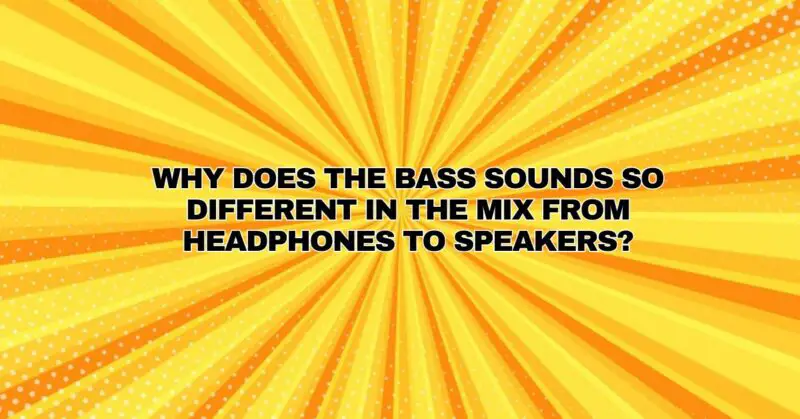The perception of bass in audio is a complex interplay of physical and psychological factors. When comparing the way bass sounds between headphones and speakers in a mix, it can often be a puzzling experience. In this comprehensive article, we will delve into the reasons why bass can sound remarkably different when switching between headphones and speakers, shedding light on the unique characteristics and challenges of each playback system.
1. Acoustic Environment
One of the most significant factors contributing to the difference in bass perception between headphones and speakers is the acoustic environment.
Headphones: When you listen to music on headphones, the sound is delivered directly into your ears. This creates an intimate listening experience where you’re isolated from external acoustic influences. As a result, you hear the bass frequencies as they were intended to be heard in the recording, without room reflections or resonances.
Speakers: In a room with speakers, the bass interacts with the room’s acoustics. Sound waves radiating from the speakers bounce off walls, floors, and ceilings, creating reflections and resonances. These interactions can either reinforce or cancel out certain bass frequencies, leading to variations in bass perception.
2. Physical Distance
The physical distance between your ears and the sound source also plays a crucial role in how you perceive bass.
Headphones: With headphones, the speakers (or drivers) are positioned very close to your ears. This proximity allows you to hear the full spectrum of bass frequencies, including the low-end thump and rumble, as if it were emanating from a point source.
Speakers: When listening to speakers, the distance between your ears and the drivers can vary significantly based on your listening position. This distance can affect the way you perceive bass frequencies, with listeners in different locations within the room experiencing variations in bass intensity and clarity.
3. Frequency Response
The frequency response characteristics of headphones and speakers also differ.
Headphones: High-quality headphones are designed to have a relatively flat and accurate frequency response, reproducing bass frequencies faithfully. This can result in a more consistent and precise bass experience.
Speakers: Speaker systems can have varying frequency responses depending on their design and placement. Some speakers may have more pronounced bass due to their design, while others may require room correction measures to achieve a balanced bass response.
4. Head-Related Transfer Function (HRTF)
The Head-Related Transfer Function is a complex set of filters that your ears and brain apply to incoming sounds based on their direction. It helps you perceive sound sources in three-dimensional space.
Headphones: Headphones deliver sound directly into your ears, bypassing the natural HRTF cues you would experience with speakers. As a result, the perception of bass localization can be different when using headphones.
Speakers: With speakers, your brain incorporates the HRTF cues from sound reflections and the physical placement of the speakers, which can affect your perception of bass directionality.
5. Personal Preference and Adaptation
Ultimately, personal preference and listener adaptation also play significant roles in how bass is perceived.
Headphones: Many people enjoy the intimate and precise bass experience provided by headphones. They may become accustomed to this sound and find it more enjoyable.
Speakers: Others prefer the tactile and immersive nature of bass from speakers, even with the added complexity of room interactions. Over time, listeners may adapt to the unique bass characteristics of their speaker setup.
Conclusion
The differences in bass perception between headphones and speakers in a mix are influenced by a combination of acoustic environment, physical distance, frequency response, HRTF, and personal preference. Neither approach is inherently better or worse, but rather, they offer distinct listening experiences. Musicians, producers, and audio enthusiasts often utilize both headphones and speakers to gain a comprehensive understanding of how their music or mixes sound across various playback systems. Ultimately, the choice between headphones and speakers for listening or mixing depends on your preferences, requirements, and the specific context in which you’re enjoying or creating audio content.

